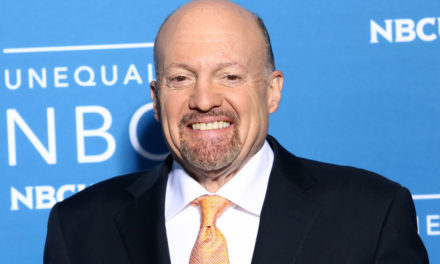Stocks closed higher on Wall Street, led by gains in banks and retailers and more in Wednesday’s Stock Market Update.
Financial sector stocks rallied, which reversed an early slide. Big banks were among the sector’s gainers. Wells Fargo rose 1.6% and Bank of America added 1.4%.
Investors continued to shift money into U.S. government bonds, keeping long-term bond yields below short-term ones. The so-called inversion of the U.S. yield curve is a rare phenomenon that has correctly predicted previous recessions.
“You’re seeing investors hedge their bets, but also take advantage of the pockets of opportunity in sectors that have been hurt by the 10-year yield coming down,” said Quincy Krosby, chief market strategist at Prudential Financial.
STOCK MARKET UPDATE
The S&P 500 rose 18 points, or 0.6%, to 2,887. The Dow Jones Industrial Average climbed 258, or 1%, to 26,035. The Nasdaq added 29, or 0.4%, to 7,856. The Russell 2000 index gained 1.1%.
The market is on track to end the week with a gain after having declined the past four weeks in a row, but major indexes are each still down more than 3% for the month.
Uncertainty over the U.S.-China trade conflict and it impact on corporate profits has rattled investors. That’s led to a volatile August for the market, which is on track for its second monthly drop this year.
Investors’ anxiety has been particularly visible in the demand spike for U.S. government bonds.
The yield in the 10-year Treasury fell below that of the two-year Treasury on Tuesday and remained lower Wednesday. The 10-year yield slid to 1.47%, down from 1.49% late Tuesday. The two-year was at 1.50%, down from 1.52% a day earlier.
When the yield curve inverted earlier this month for the first time since 2007, it led to a broad market sell-off. This week, investors’ reaction has been more muted.
That could be because more traders are factoring in other variables that may be skewing the demand for U.S. bonds that’s pulling yields so low. For example, many other countries’ long-term bonds now carry negative yields, making U.S. Treasurys more attractive to overseas investors.
“They’re coming into the United States and pushing yields down,” Krosby said.
This means market watchers trying to gauge the likelihood of a recession should be focusing more on what employment, manufacturing and other key economic data show in coming months, she added.
Recent economic reports have been mixed. Consumer confidence dipped slightly this month, but remained close to a nine-month high. Orders to U.S. factories for large manufactured goods rose in July for the second straight month.
But in a report two weeks ago, the Federal Reserve said U.S. industrial production fell 0.2% in July. And earlier this month, the Institute for Supply Management said U.S. factory activity expanded at a slower rate in July for the fourth consecutive month. Even though it was the 35th straight month of growth, the expansion is slowing as measures of production and employment fall.
The overall economy, as measured by gross domestic product, slowed to growth at an annual rate of 2.1% in the April-June quarter, compared to 3.1% in the first quarter. An updated snapshot is due out Friday.
U.S. manufacturers are facing numerous challenges, most significantly the trade showdown between Washington and Beijing.
Last week, the trade conflict escalated again with both sides threatening new tariffs on each other’s goods, triggering a sharp sell-off in global markets. On Monday the market recouped some of those losses after President Donald Trump said his negotiators had received encouraging calls from China over the weekend. Traders drew encouragement from the development, even though China’s foreign ministry denied knowledge of any such calls.
U.S. and Chinese trade negotiators are due to meet next month in Washington, but neither side has given any indication of offering concessions to break a deadlock. A round of talks last month in Shanghai ended with no sign of progress.
Investors also pored over a mixed batch of corporate earnings reports and outlooks Wednesday.
Tiffany & Co. gained 3.1% after the luxury jeweler’s second quarter results beat analysts’ projections. The company’s profits and sales fell from a year earlier as it grappled with continued weak spending by international tourists. However, Tiffany reaffirmed its full-year forecast.
Hewlett Packard Enterprise climbed 3.4% after the information technology products and services provider reported earnings that easily beat analysts’ forecasts.
Dycom Industries jumped 8.6% after the engineering and construction services company’s second quarter results came in ahead of analysts’ expectations.
Results from other companies failed to impress investors.
Autodesk plunged 6.7% after the software company slashed its full-year forecasts, while Movado Group sank 15% after the watchmaker’s earnings and revenue fell short of Wall Street’s expectations.
European markets closed broadly lower after British Prime Minister Boris Johnson moved to suspend Parliament, which would hamper lawmakers’ efforts to stop a no-deal departure from the European Union in October.
© The Associated Press. All rights reserved.




